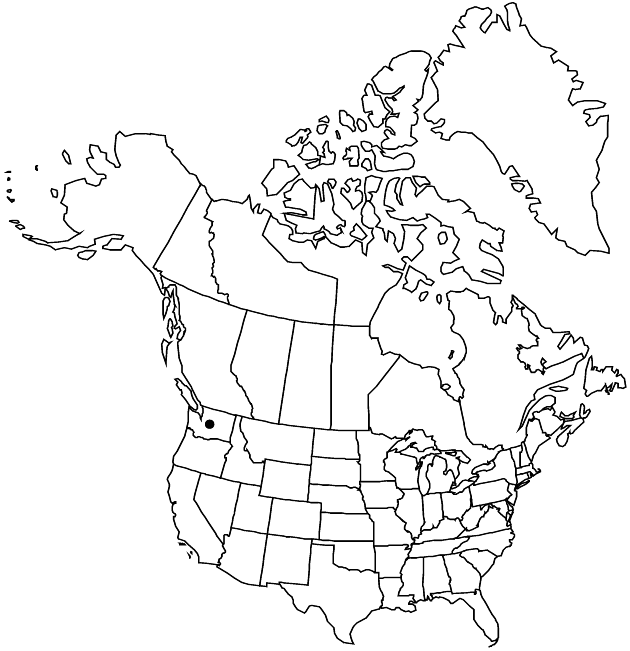Chaenactis thompsonii
in C. L. Hitchcock et al., Vasc. Pl. Pacif. N.W. 5: 123, fig. [p. 125]. 1955.
Perennials, 10–30 cm (not or scarcely cespitose, not matted); proximal indument thinning with age, grayish, arachnoid-sericeous to thinly lanuginose. Stems mostly 5–15+, ascending to erect. Leaves mostly cauline, 2–5 cm; largest blades ± elliptic, ± plane, 1-pinnately lobed; lobes mostly 2–5 pairs, remote, ± plane. Heads mostly 1–3 per stem. Peduncles ascending to erect, 2–5 cm. Involucres ± obconic. Phyllaries: longest (10–)12–15 mm; outer closely lanuginose, not stipitate-glandular, apices erect, ± rigid. Corollas 7–9 mm. Cypselae 7–9 mm (eglandular); pappi: longest scales 3.5–5 mm.
Phenology: Flowering Jun–Aug.
Habitat: Rocky or gravelly serpentine slopes, scree, talus, openings in or above conifer forests
Elevation: (900–)1200–2200 m
Discussion
Of conservation concern.
Chaenactis thompsonii appears to be sister to C. evermannii; it is known from the mountains of central and northwestern Washington. The similar habits of C. thompsonii and C. ramosa (= C. douglasii var. douglasii) appear to result from convergent evolution in the distinctive habitat of their type localities (Wenatchee Mountains), not from a close genetic relationship as suggested by Cronquist.
Selected References
None.
